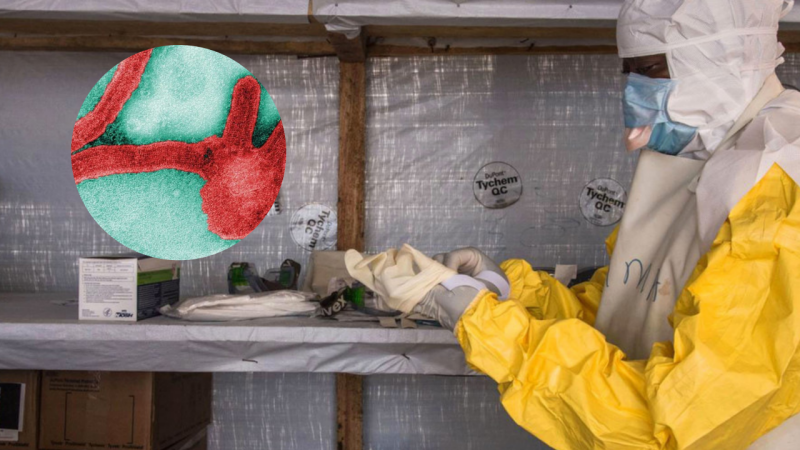
WHO has released a disease outbreak news this Monday (9 August, 2021), revealing a confirmed case of Marburg virus disease (MVD) in south-western Guinea, which also confirmed as the first known case of Marburg virus disease in West Africa.
Marburg virus is the causative agent of Marburg virus disease (MVD), a disease with a case fatality ratio up to 88% which could turn much lower with early diagnosis and proper patient care. Two large outbreaks that occurred in Marburg and Frankfurt in Germany, and in Belgrade and Serbia simultaneously, taken as the initial recognition of the disease worldwide back in 1967.
Key facts of MVD according to WHO
- Marburg virus disease (MVD), formerly known as Marburg haemorrhagic fever, is a severe, often fatal illness in humans.
- The virus causes severe viral haemorrhagic fever in humans.
- The average MVD case fatality rate is around 50%. Case fatality rates have varied from 24% to 88% in past outbreaks depending on virus strain and case management.
- Early supportive care with rehydration, and symptomatic treatment improves survival. There is as yet no licensed treatment proven to neutralize the virus, but a range of blood products, immune therapies and drug therapies are currently under development.
- Rousettus aegyptiacus, fruit bats of the Pteropodidae family, are considered to be natural hosts of Marburg virus. The Marburg virus is transmitted to people from fruit bats and spreads among humans through human-to-human transmission.
- Community engagement is key to successfully controlling outbreaks.
Another concerning point is the possible misdiagnosis of Marburg and Ebola. Marburg and Ebola viruses are both members of the Filoviridae family (filovirus). Though caused by different viruses, the two diseases are clinically similar. Both diseases are rare and have the capacity to cause outbreaks with high fatality rates.
Click to download Ebola and Marburg virus disease epidemics: preparedness, alert, control, and evaluation
According to WHO advice, health workers should always implement standard precautions when caring for any patient, regardless of their presumed diagnosis since human-to-human transmission of Marburg virus is primarily associated with direct contact with blood and/or bodily fluids of infected persons.
Since diagnosis is the first step to recognize further treatment of the suspicious samples, Bioperfectus provides a total solution from Marburg Virus Real Time PCR Kit (RUO), Ebola Virus Real Time PCR Kit to Nucleic acid extraction reagents and instruments to PCR system.
Click to downloadBioperfectus Solution of Nucleic Acid Extraction and RUO product list.
|
Year(s)
|
Country
|
Reported number of human cases
|
Reported number (%) of deaths among cases
|
Situation
|
|
2014
|
Uganda
|
1*
|
1
|
Investigations are on-going. Testing conducted at CDC/UVRI
|
|
2012
|
Uganda
|
15
|
4 (27%)
|
Testing at CDC/UVRI identified a Marburg virus disease outbreak in the districts of Kabale, Ibanda, Mbarara, and Kampala over a 3-week time period.
|
|
2008
|
Netherlands ex Uganda
|
1
|
1 (100%)
|
A 40-year-old Dutch woman with a recent history of travel to Uganda was admitted to hospital in the Netherlands. Three days prior to hospitalization, the first symptoms (fever, chills) occurred, followed by rapid clinical deterioration. The woman died on the 10th day of the illness.
|
|
2008
|
USA ex Uganda
|
1
|
0 (0)
|
A U.S traveler returned from Uganda in January 2008. The patient developed illness 4 days after returning, was hospitalized, discharged and fully recovered. The patient was retrospectively diagnosed with Marburg virus infection.
|
|
2007
|
Uganda
|
4
|
1 (25%)
|
Small outbreak, with 4 cases in young males working in a mine. To date, there have been no additional cases identified.
|
|
2004-2005
|
Angola
|
252
|
227 (90%)
|
Outbreak believed to have begun in Uige Province in October 2004. Most cases detected in other provinces have been linked directly to the outbreak in Uige.
|
|
1998-2000
|
Democratic Republic of Congo (DRC)
|
154
|
128 (83%)
|
Most cases occurred in young male workers at a gold mine in Durba, in the north-eastern part of the country, which proved to be the epicentre of the outbreak. Cases were subsequently detected in the neighboring village of Watsa.
|
|
1990
|
Russia
|
1
|
1 (100%)
|
Laboratory contamination.
|
|
1987
|
Kenya
|
1
|
1 (100%)
|
A 15-year-old Danish boy was hospitalized with a 3-day history of headache, malaise, fever, and vomiting. Nine days prior to symptom onset, he had visited Kitum Cave in Mount Elgon National Park. Despite aggressive supportive therapy, the patient died on the 11th day of illness. No further cases were detected.
|
|
1980
|
Kenya
|

